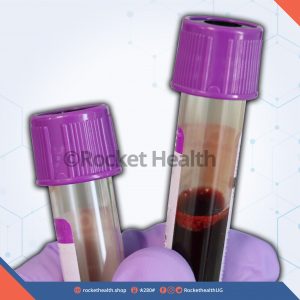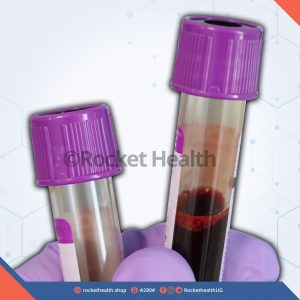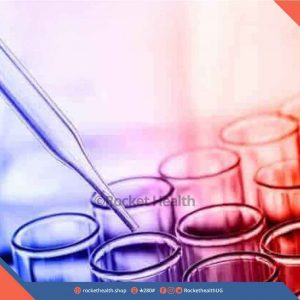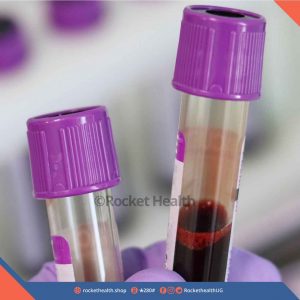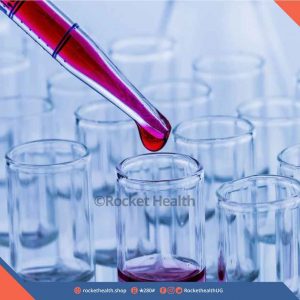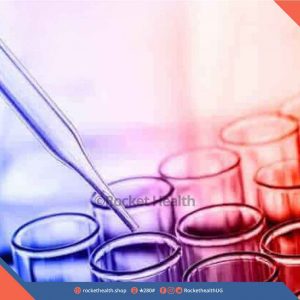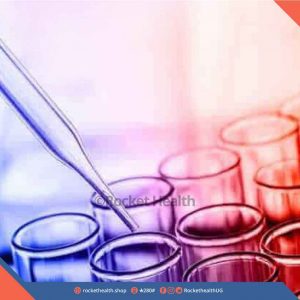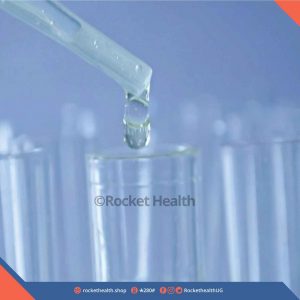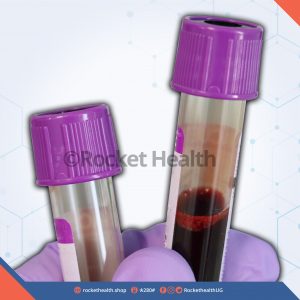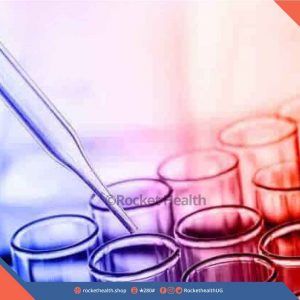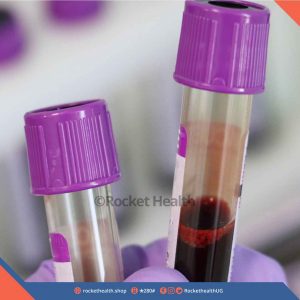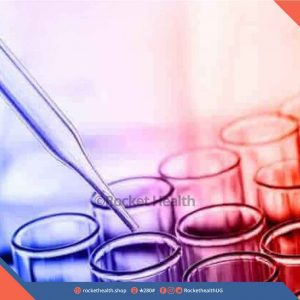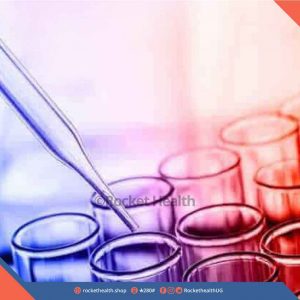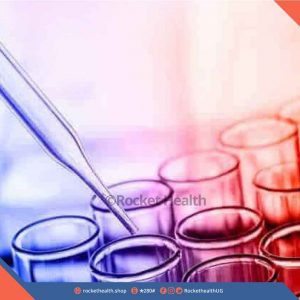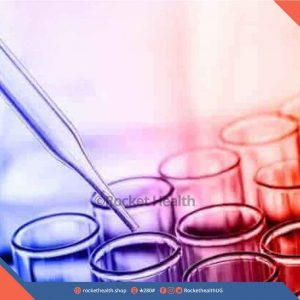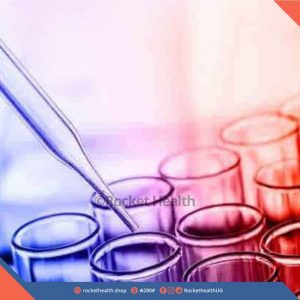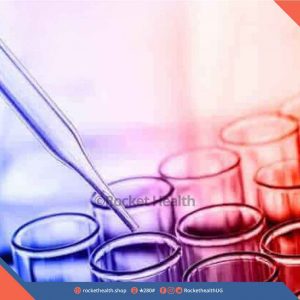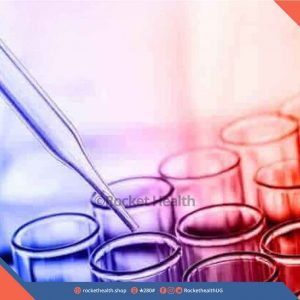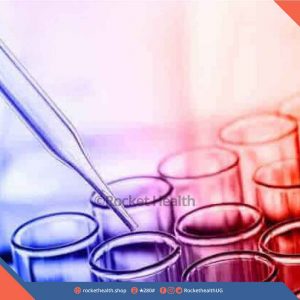No products in the cart.
-
COMPLETE BLOOD COUNT
Test that measures several components and features of your blood and is used to evaluate your overall health and check for many disorders like anemia, infection, leukemia.
Blood.
No specific patient preparation protocol required. Inform your doctor if you are on any medications or have any underlying medical conditions or allergies before undergoing this test.
This test is used to determine general health status, screen for disorders and evaluate nutritional status. It can help diagnose conditions such as anemia, blood cancers and infections. The complete blood count (CBC) is a test that measures the cells that circulate in blood. Blood consists of three types of cells suspended in a fluid called plasma: white blood cells (WBCs), red blood cells (RBCs), and platelets (PLTs). They are produced and mature primarily in the bone marrow and are then released into the bloodstream as needed. The readings vary with sex, age, physiological state, and general health.
20,000UGXCOMPLETE BLOOD COUNT
20,000UGX -
BLOOD GROUPING
Test that shows what type of blood you carry (A, B, AB and O) including Rh factor. Knowing your blood type enables safe blood donation and transfusion.
Blood.
No specific patient preparation protocol required. Inform your doctor if you are on any medications or have any underlying medical conditions or allergies before undergoing this test.
Blood grouping detects the presence or absence of these antigens to determine a person’s ABO blood group and Rh type. Blood groups are based on the markers (specific carbohydrates or proteins) or antigens on the surface of red blood cells (RBCs). Two major antigens or surface identifiers on human RBCs are the A and B antigens. Another important surface antigen is called Rh. People whose red blood cells have A antigens are in blood group A, those with B antigens are group B, those with both A and B antigens are in group AB, and those who do not have either of these markers are in blood group O. If the Rh protein is present on the red blood cells, a person’s blood type is Rh+ (positive); if it is absent, the person’s blood is type Rh- (negative).
10,000UGXBLOOD GROUPING
10,000UGX -
D-Dimer
D-dimer tests are used to help rule out the presence of an inappropriate blood clot (thrombus).
Blood.
No specific patient preparation protocol required. Inform the doctor if you are on any medications, have any allergies or underlying medical conditions before this test
D-dimer is one of the protein fragments produced when a blood clot gets dissolved in the body. It is normally undetectable or detectable at a very low level unless the body is forming and breaking down blood clots, then its level in the blood can significantly rise. While clots most commonly form in the veins of the legs, they may also form in other areas as well. Measurements of D-dimer can be used to help detect clots in any of these sites. For example, clots in coronary arteries are the cause of myocardial infarction (heart attacks).
75,000UGXD-Dimer
75,000UGX -
HB ELECTROPHORESIS
This is a blood test that is used to check the different types of hemoglobin and can be used to detect hemoglobin disorders such as sickle-cell disease.
Blood.
No specific patient preparation protocol required. Inform your doctor if you are on any medications or have any underlying medical conditions or allergies before undergoing this test.
Hb electrophoresis is done to detect hemoglobinopathies. A hemoglobinopathy is an inherited blood disorder in which an individual has an abnormal form of hemoglobin (variant) or decreased production of hemoglobin (thalassemia).
75,000UGXHB ELECTROPHORESIS
75,000UGX -
Vitamin B12
This test measures the amount of vitamin B12 in the blood. The body needs this B vitamin to make blood cells and to maintain a healthy nervous system.
Blood.
Inform the doctor if you are on any medications, have any allergies or underlying medical conditions before this test. Ask your healthcare practitioner or lab for specific instructions.
The main role of vitamin D is to help regulate blood levels of calcium, phosphorus, and (to a lesser extent) magnesium. Vitamin D is vital for the growth and health of bone; without it, bones will be soft, malformed, and unable to repair themselves normally, resulting in diseases called rickets in children and osteomalacia in adults. Vitamin D comes from two sources: endogenous(D3), which is produced in the skin on exposure to sunlight, and exogenous(D4), which is ingested in foods and supplements.
60,000UGXVitamin B12
60,000UGX -
Prothrombin Time (INR)
The prothrombin time (PT) is a test that helps evaluate your body’s ability to appropriately form blood clots.
Blood.
None needed, however if you are receiving anticoagulant therapy, the blood sample should be collected before taking your daily dose.
A PT measures the number of seconds it takes for a clot to form in your sample of blood after substances (reagents) are added. The PT is often performed along with a partial thromboplastin time (PTT) and together they assess the amount and function of proteins called coagulation factors that are an important part of proper blood clot formation. For people taking warfarin, most laboratories report PT results that have been adjusted to the INR. A prolonged PT means that the blood is taking too long to form a clot, this may be caused by conditions such as liver disease, vitamin K deficiency, or a coagulation factor deficiency (e.g., factor VII deficiency).
35,000UGXProthrombin Time (INR)
35,000UGX -
Factor VIII(Antihemophilic factor A)
This test measures the activity of a blood-clotting protein known as factor VIII to find out whether you have hemophilia A or another clotting disorder.
Blood.
No specific patient preparation protocol required. Inform the doctor if you are on any medications, have any allergies or underlying medical conditions before this test.
Coagulation factors are proteins circulating in the blood that are essential for proper blood clot formation. Coagulation factor tests measure the function of or sometimes the amount of these proteins in the blood. There are nine coagulation factor proteins that can be measured clinically Factor I, II, V, VII, IX, X, XI, XIII. These factors are referred to by a name or Roman numeral or both in some cases. When one or more of these factors are produced in too small a quantity, or are not functioning correctly, they can cause excessive bleeding.
200,000UGXFactor VIII(Antihemophilic factor A)
200,000UGX -
RHEUMATOID FACTOR
This blood test is used for the diagnosis of rheumatoid arthritis. High levels of rheumatoid factor in the blood are most often associated with autoimmune diseases, such as rheumatoid arthritis and Sjogren’s syndrome.
Blood.
No specific patient preparation protocol required. Inform your doctor if you are on any medications or have any underlying medical conditions or allergies before undergoing this test.
Rheumatoid factor (RF) is an autoantibody, an immunoglobulin M (IgM) protein that is produced by the body’s immune system. Autoantibodies attack a person’s own tissues, mistakenly identifying the tissue as “foreign.”
25,000UGXRHEUMATOID FACTOR
25,000UGX -
PERIPHERAL BLOOD FILM
This test is used to look for abnormalities in blood cells and enables diagnoses of many illnesses.
Blood.
No specific patient preparation protocol required. Inform your doctor if you are on any medications or have any underlying medical conditions or allergies before undergoing this test.
A blood film is a drop of blood spread thinly onto a glass slide that is then treated with a special stain and the blood cells on the slide are examined and evaluated.
30,000UGXPERIPHERAL BLOOD FILM
30,000UGX -
Activated Partial Thromboplastin Test (PTT)
This is a screening test that helps check a person’s ability to properly form blood clots.
Blood.
None however, a high-fat meal before the blood draw may affect the test and should be avoided.
The partial thromboplastin time (PTT; also known as activated partial thromboplastin time (aPTT)) is a screening test that helps evaluate a person’s ability to appropriately form blood clots. It measures the number of seconds it takes for a clot to form in a sample of blood after substances (reagents) are added. A prolonged PTT means that the blood is taking too long to form a clot, this may be caused by conditions such as liver disease, vitamin K deficiency, or a coagulation factor deficiency (e.g., factor VII deficiency).
30,000UGX -
ERYTHROCYTE SEDIMENTATION RATE
Erythrocyte sedimentation rate (ESR ) test helps to determine if you have a chronic inflammatory condition in the body such as arthritis.
Blood.
No specific patient preparation protocol required. Inform your doctor if you are on any medications or have any underlying medical conditions or allergies before undergoing this test.
Erythrocyte sedimentation rate (ESR or sed rate) is a test that indirectly measures the degree of inflammation present in the body. The test actually measures the rate of fall (sedimentation) of erythrocytes (red blood cells) in a sample of blood that has been placed into a tall, thin, vertical tube.
15,000UGXERYTHROCYTE SEDIMENTATION RATE
15,000UGX -
Reticulocyte Count
A reticulocyte test determines the number and/or percentage of reticulocytes( Immature Red Blood Cells) in the blood and is a reflection of recent bone marrow function or activity.
Blood.
No specific patient preparation protocol required. Inform the doctor if you are on any medications, have any allergies or underlying medical conditions before this test.
Red blood cells are produced in the bone marrow, where blood-forming (hematopoietic) stem cells differentiate and develop, eventually forming reticulocytes and finally becoming mature RBCs. A variety of diseases and conditions i.e hemorrhage, hemolysis, bone marrow disorder, kidney disease can affect the production of new RBCs and/or their survival, in addition to those conditions that may result in significant bleeding. These conditions may lead to a rise or drop in the number of RBCs and may affect the reticulocyte count.
25,000UGXReticulocyte Count
25,000UGX -
Factor X (Stuart-Prower factor)
This test is part of a group of screening tests to find out which type of bleeding disorder you may have.
Blood.
No specific patient preparation protocol required. Inform the doctor if you are on any medications, have any allergies or underlying medical conditions before this test.
Coagulation factors are proteins circulating in the blood that are essential for proper blood clot formation. Coagulation factor tests measure the function of or sometimes the amount of these proteins in the blood. There are nine coagulation factor proteins that can be measured clinically Factor I, II, V, VII, IX, X, XI, XIII. These factors are referred to by a name or Roman numeral or both in some cases. When one or more of these factors are produced in too small a quantity, or are not functioning correctly, they can cause excessive bleeding.
200,000UGXFactor X (Stuart-Prower factor)
200,000UGX -
Factor IX (Antihemophilic factor B or Christmas factor)
This test is part of a group of screening tests to find out which type of bleeding disorder you may have.
Blood.
No specific patient preparation protocol required. Inform the doctor if you are on any medications, have any allergies or underlying medical conditions before this test.
Coagulation factors are proteins circulating in the blood that are essential for proper blood clot formation. Coagulation factor tests measure the function of or sometimes the amount of these proteins in the blood. There are nine coagulation factor proteins that can be measured clinically Factor I, II, V, VII, IX, X, XI, XIII. These factors are referred to by a name or Roman numeral or both in some cases. When one or more of these factors are produced in too small a quantity, or are not functioning correctly, they can cause excessive bleeding.
200,000UGX -
(Factor I) Fibrinogen
This test measures the amount of fibrinogen in the blood which is an important component in blood clotting process.
Blood.
No specific patient preparation protocol required. Inform the doctor if you are on any medications, have any allergies or underlying medical conditions before this test.
Coagulation factors are proteins circulating in the blood that are essential for proper blood clot formation. Coagulation factor tests measure the function of or sometimes the amount of these proteins in the blood. There are nine coagulation factor proteins that can be measured clinically Factor I, II, V, VII, IX, X, XI, XIII. These factors are referred to by a name or Roman numeral or both in some cases. When one or more of these factors are produced in too small a quantity, or are not functioning correctly, they can cause excessive bleeding.
200,000UGX(Factor I) Fibrinogen
200,000UGX -
Factor VII(Proconvertin)
This blood test evaluates the functioning of a protein that helps blood to clot.
Blood.
No specific patient preparation protocol required. Inform the doctor if you are on any medications, have any allergies or underlying medical conditions before this test.
Coagulation factors are proteins circulating in the blood that are essential for proper blood clot formation. Coagulation factor tests measure the function of or sometimes the amount of these proteins in the blood. There are nine coagulation factor proteins that can be measured clinically Factor I, II, V, VII, IX, X, XI, XIII. These factors are referred to by a name or Roman numeral or both in some cases. When one or more of these factors are produced in too small a quantity, or are not functioning correctly, they can cause excessive bleeding.
200,000UGXFactor VII(Proconvertin)
200,000UGX -
Factor V (Proaccelerin or labile factor)
This is a blood test that checks for a deficiency in a protein known as factor V that helps in blood clotting.
Blood.
No specific patient preparation protocol required. Inform the doctor if you are on any medications, have any allergies or underlying medical conditions before this test.
Coagulation factors are proteins circulating in the blood that are essential for proper blood clot formation. Coagulation factor tests measure the function of or sometimes the amount of these proteins in the blood. There are nine coagulation factor proteins that can be measured clinically Factor I, II, V, VII, IX, X, XI, XIII. These factors are referred to by a name or Roman numeral or both in some cases. When one or more of these factors are produced in too small a quantity, or are not functioning correctly, they can cause excessive bleeding.
200,000UGXFactor V (Proaccelerin or labile factor)
200,000UGX -
Factor IX
This test is part of a group of screening tests to find out which type of bleeding disorder you may have.
Blood.
No specific patient preparation protocol required. Inform the doctor if you are on any medications, have any allergies or underlying medical conditions before this test.
Coagulation factors are proteins circulating in the blood that are essential for proper blood clot formation. Coagulation factor tests measure the function of or sometimes the amount of these proteins in the blood. There are nine coagulation factor proteins that can be measured clinically Factor I, II, V, VII, IX, X, XI, XIII. These factors are referred to by a name or Roman numeral or both in some cases. When one or more of these factors are produced in too small a quantity, or are not functioning correctly, they can cause excessive bleeding.
200,000UGXFactor IX
200,000UGX -
Factor II (Prothrombin)
This test measures how much of a protein called factor II is in your blood. It can help find out whether you have a bleeding or blood clotting disorder.
Blood.
No specific patient preparation protocol required. Inform the doctor if you are on any medications, have any allergies or underlying medical conditions before this test.
Coagulation factors are proteins circulating in the blood that are essential for proper blood clot formation. Coagulation factor tests measure the function of or sometimes the amount of these proteins in the blood. There are nine coagulation factor proteins that can be measured clinically Factor I, II, V, VII, IX, X, XI, XIII. These factors are referred to by a name or Roman numeral or both in some cases. When one or more of these factors are produced in too small a quantity, or are not functioning correctly, they can cause excessive bleeding.
200,000UGXFactor II (Prothrombin)
200,000UGX -
Anti Streptolysin O Titre
This is a blood test that checks for effects of a recent streptococcus bacteria infection that may cause Rheumatic fever or kidney disease.
Blood.
You may be instructed not to eat six hours before the test. Inform the doctor if you are on any medications, have any allergies or underlying medical conditions before this test.
Antistreptolysin O (ASO) is an antibody targeted against streptolysin O, a toxic enzyme produced by group A Streptococcus bacteria. Group A Streptococcus (Streptococcus pyogenes) is the bacterium responsible for causing strep throat and a variety of other infections, including skin infections (pyoderma, impetigo, cellulitis). In most cases, strep infections are identified and treated with antibiotics, and the infections resolve. When a strep infection does not cause identifiable symptoms and goes untreated, or is treated ineffectively, complications namely rheumatic fever and a type of kidney disease (glomerulonephritis), can sometimes develop, especially in young children.
30,000UGXAnti Streptolysin O Titre
30,000UGX










